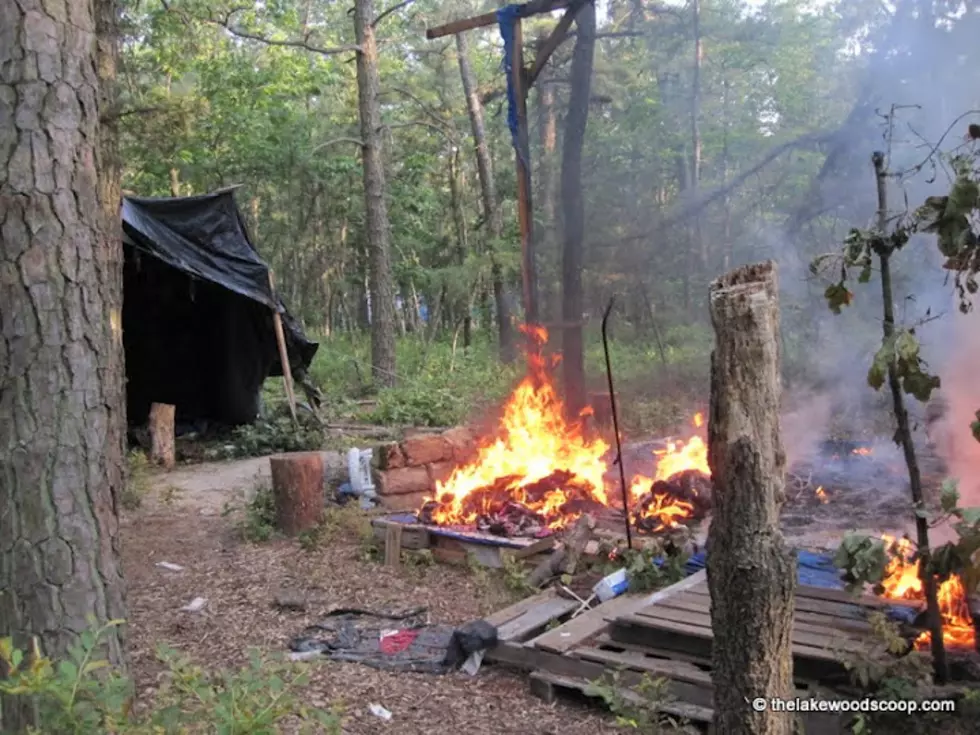![NJ’s Red Light Camera Program Mostly On Hold [POLL/AUDIO]](http://townsquare.media/site/394/files/2012/06/red-light-camera-intersecti1.jpg?w=980&q=75)
NJ’s Red Light Camera Program Mostly On Hold [POLL/AUDIO]
It’s less likely you’ll be getting a ticket in the mail in the near future because an intersection camera appears to have snapped a picture of you running a red light, but don’t run a red light because you might get a ticket sometime down the road anyway. Yesterday, Governor Chris Christie’s Administration announced the suspension of the Red Light Running Automated Enforcement Program (RLR) until most of the towns in the pilot program can certify that the timing on the yellow light signal conforms to the prescribed statute.
According to the New Jersey Department of Transportation (NJDOT) the suspension order affects 63 of the 85 intersections statewide where red light cameras are operating or have been approved for operation. It affects all locations in 19 participating municipalities and one intersection in each of two other municipalities.
NJDOT, which is administering the five-year pilot program, has ordered that the issuance of new violation summonses be suspended at the 63 intersections because it has come to the attention of the Department that the pilot program legislation specifies a formula to determine the proper duration of the yellow light in a traffic signal that differs from the legally required, nationally accepted formula that NJDOT or municipalities use when installing traffic signals. The difference in the formulas may or may not require a longer duration for the yellow light.
Red Light Cameras Will Still Be Tracking Violations During Suspension Period
NJDOT commissioner Jim Simpson says, “Engineer to engineer you’re splitting hairs, but our job is to implement the law as written specifically.”
NJDOT has notified the 21 affected municipalities of the variance in the formulas and has directed each to perform an analysis that conforms to the formula in the legislation.
Simpson says he has, “Directed the affected municipalities to conduct their traffic analyses and submit certifications to our Department no later than August 1 (2012).”
“The cameras will still be recording,” explains Simpson. “They can still monitor they can take the picture, but (towns) can’t mail summonses until they re-certify the timing…..If we find out that the re-certification indicates the timing was correct, then if a citation was pending the citation will be issued even if it occurred during the suspension…..I think the important thing is never run a red light. Okay?”
If the analysis shows that a signal does not display a yellow light long enough to meet the formula in the legislation, that intersection will be removed from the pilot program.
WHAT RED LIGHT CAMERAS ARE AFFECTED?
The violation suspension and signal re-certification directives affect all cameras installed at intersections in the following 19 municipalities:
Brick
Cherry Hill
East Windsor
Edison
Englewood Cliffs
Glassboro
Lawrence
Linden
Monroe
Newark
Palisades Park
Piscataway
Pohatcong
Rahway
Roselle Park
Springfield (Union County)
Stratford
Union Township
Wayne
The order affects one location in each of the following two municipalities:
Jersey City at JFK Boulevard (CR 501) and Communipaw Avenue
Woodbridge at Route 1 and Avenel Street.
The intersections not affected by the directives include one in Deptford, one in East Brunswick, four in Gloucester and one in New Brunswick.
Additionally, 12 of 13 intersections equipped with cameras in Jersey City and three of four intersections in Woodbridge are excluded from the directives.
RELATED:
“The concerns expressed by many who questioned the RLR program were taken into consideration by the Christie administration and suspending the program until towns can certify that RLR signals are properly timed is the right move,” says Assemblyman Declan O’Scanlon. “Towns were using this pilot program as auto ticket-issuing machines and a way to generate revenue. Improving safety is a laudable goal, but not at the expense of punishing innocent drivers.”
For some time, O’Scanlon has been concerned about the timing of the traffic signals. He believes they are intended to create revenue opportunities for municipalities without improving safety as proponents of the law contend. The RLR was signed into law on January 13, 2008, by former Governor Jon Corzine and implemented in 2009 by that administration. O’Scanlon contends the implementation wasn’t done according to the statute – which itself was designed so as not to punish innocent people.
How Much TIme Between Light Changes?
NJDOT follows the legally required engineering and safety standards in the Manual on Uniform Traffic Control Devices, which requires a minimum duration of the yellow light to equal one-tenth of the posted speed limit on the approaching road. This is a safety standard designed to provide drivers with enough time to respond to the yellow light and prevent collisions.
For example, where the approaching road has a posted speed of 40 miles per hour, the signal must display yellow for a minimum of four seconds. NJDOT rounds up to the nearest whole second, so in instances where the approaching speed limit is 45 miles per hour, the signal displays a yellow light for five seconds.
The formula in the legislation to determine pilot-program eligibility requires an analysis of vehicle speeds as they approach the intersection where a red light camera installation is proposed. The formula requires a yellow signal of at least three seconds if at least 85 percent of the approaching traffic travels at speeds of 25 miles per hour or less.
For each five mile-per-hour increase in vehicle speed above 30 miles per hour, the minimum duration of the yellow light must be increased by 0.5 seconds, according to the legislation.
This requirement aims to ensure that the traffic signal is timed properly to provide motorists with sufficient time to avoid a violation and fine by entering an intersection when the light is red.
More From 92.7 WOBM



![Do You Care If NJ Government Shuts Down This Year? [AUDIO]](http://townsquare.media/site/394/files/2012/06/statehouse2.jpg?w=980&q=75)


![Closing Arguments Begin In Sandusky Trial [VIDEO]](http://townsquare.media/site/394/files/2012/06/146565505.jpg?w=980&q=75)
![NJ Swelters, Temps Will Reach Triple Digits Today [POLL/AUDIO]](http://townsquare.media/site/394/files/2012/06/Air-conditioning-300x225.jpg?w=980&q=75)
